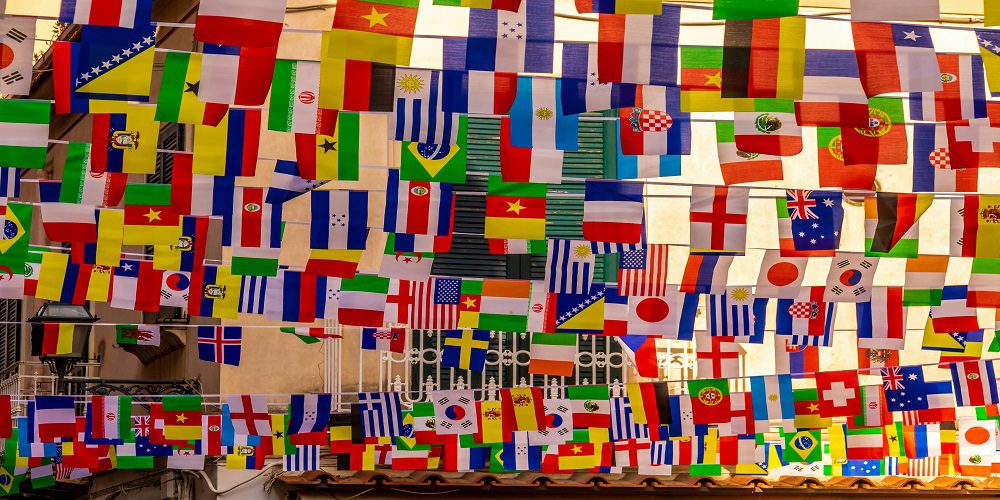Do you ever wonder where that invigorating cup of coffee comes from or how it made its way into your morning routine? Join us on a captivating journey as we delve into the origins of coffee and explore which country truly shines in the global market. From the lush plantations of South America to the vibrant café culture of Europe, we’ll uncover the secrets behind each bean’s unique flavor profile and discover why certain countries have become synonymous with exceptional brews.
Introduction
Coffee is one of the most beloved and consumed beverages in the world. Its rich aroma, bold flavor, and energizing effect have made it a staple in many people’s daily routines. But have you ever stopped to think about where this magical drink comes from? The journey of coffee begins long before it reaches your cup, and understanding its origins can give you a deeper appreciation for each sip.
The story of coffee dates back centuries to ancient Ethiopia, where legend has it that a goat herder named Kaldi noticed his goats became more energetic after chewing on bright red berries. Curious, he tried them himself and felt invigorated as well. This discovery soon spread throughout the Arabian Peninsula, where coffee cultivation began to take shape.
From there, trade routes carried coffee beans from Africa to Europe and eventually across the globe. Today, coffee is grown in over 70 countries worldwide, with each region producing unique flavors based on their climate, soil composition, and farming practices.
History of Coffee Growing: From Ethiopia to Modern Times
The history of coffee growing can be traced back to ancient Ethiopia, where the legend of Kaldi, a goat herder who discovered the energizing effects of coffee beans, originated. However, it was not until the 15th century that coffee began to be cultivated and traded on a larger scale.
Coffee cultivation is believed to have initially spread from Ethiopia to Yemen in the 15th century, thanks to Arab traders. The port city of Mocha became a major hub for trade and distribution of coffee beans, giving rise to one of the earliest known forms of coffee houses where people would gather to drink and socialize.
From Yemen, coffee continued its journey through Persia, Turkey, and eventually Europe in the 16th century. It quickly gained popularity among Europeans as a flavorful and stimulating beverage. By the 17th century, coffee had made its way across continents and was being cultivated in countries like India, Indonesia, and Brazil.
One key factor in this widespread distribution of coffee was colonization by European powers. As they established colonies in various parts of Asia and Africa, they also brought with them their love for coffee culture. This led to the establishment of vast plantations in countries like Java (now part of Indonesia) and Ceylon (now Sri Lanka).
Top 5 Coffee-Producing Countries Worldwide
Coffee is one of the most popular beverages in the world, with millions of people consuming it every day. But have you ever wondered where your morning cup of coffee comes from? Coffee production is a major industry that involves numerous countries around the globe. In this section, we will explore the top five coffee-producing countries worldwide and learn about their unique contributions to the global market.
1) Brazil: Brazil is by far the largest producer of coffee globally, accounting for 30% of all coffee production in the world. The country has been cultivating coffee since the early 18th century and is famous for its high-quality Arabica beans. The vast majority of Brazil’s coffee production takes place in the southeastern states, especially Minas Gerais. The climate and soil conditions in these regions are ideal for growing coffee plants, which produce smooth and well-balanced flavors loved by many.
2) Vietnam: Despite only starting to produce coffee commercially in the late 20th century, Vietnam has quickly become a powerhouse in the global market. The country now produces more than 20% of all coffee worldwide and has surpassed Colombia to become the second-largest producer after Brazil. Vietnam specializes in Robusta beans, known for their strong taste and high caffeine content. These beans are often used to make instant or blended coffees but can also be found as single-origins with unique flavor profiles.
3) Colombia: Known as one of South America’s finest producers, Colombia accounts for nearly 10% of all coffee production globally. The country’s coffee-growing regions, spread across the Andes mountain range, produce high-quality Arabica beans with rich and diverse flavors. Colombian coffee is often described as having a smooth, well-balanced taste with notes of chocolate and fruity undertones.
4) Indonesia: Indonesia is the fourth-largest producer of coffee in the world, with around 6% of global production. The country is famous for its unique processing method called “Giling Basah,” which involves drying the coffee beans with a high moisture content, resulting in a distinct flavor. Indonesia mainly produces Robusta beans, but they also grow some Arabica varieties on the islands of Sumatra and Java.
5) Ethiopia: Last but certainly not least, Ethiopia is considered to be the birthplace of coffee and continues to be one of the top producers globally. Coffee cultivation in Ethiopia dates back centuries, and today, the country accounts for around 3% of all coffee production worldwide. Ethiopian coffees are known for their bright acidity, fruity flavors, and floral aromas, making them highly sought after by specialty coffee roasters.
What makes these countries stand out?
When it comes to the world of coffee, there are a few countries that stand out above the rest. These countries have made a name for themselves in the global market with their unique coffee beans and rich coffee culture. But what exactly makes these countries shine? Let’s take a journey through some of the top coffee origins and find out.
1. Ethiopia
Considered to be the birthplace of coffee, Ethiopia has been producing and consuming coffee since the 9th century. It is home to thousands of different varieties of Arabica beans, making it one of the most diverse coffee-growing regions in the world. The country’s traditional method of preparing and serving coffee, known as “buna,” is an important part of its cultural heritage. The ceremony involves roasting fresh beans over an open fire and brewing them in a clay pot called “jebena.” This unique preparation method gives Ethiopian coffee its distinct fruity and floral flavors, making it highly sought-after by specialty coffee lovers.
2. Colombia
Colombia is synonymous with high-quality Arabica coffee beans. With its ideal climate and topography, this South American country produces some of the best single-origin coffees in the world. Colombian farmers also take great pride in their production process, using sustainable farming methods that preserve both their land and their communities’ well-being. Additionally, Colombia is famous for its Juan Valdez brand, which represents small-scale farmers who grow premium-quality beans. These factors contribute to Colombia’s reputation as a leading producer of specialty coffee.
3. Brazil
As the world’s largest producer and exporter of coffee, Brazil plays a significant role in the global coffee market. The country’s vast size and diverse climate make it possible to grow different types of beans, from mild and nutty to bold and chocolaty. Brazil is also known for its state-of-the-art processing methods, which involve drying the beans in the sun on large patios or using mechanical dryers. This results in a consistent and high-quality product that is appreciated by coffee lovers worldwide.
4. Kenya
Kenyan coffee has a distinct flavor profile, characterized by its bright acidity and fruity notes. These unique qualities are due to the country’s high altitudes, rich volcanic soils, and ideal climate for growing Arabica beans. Kenyan farmers also use advanced processing techniques, such as washing the beans with glacier water, to enhance their flavor. Additionally, Kenya has strict regulations for grading its coffee beans, ensuring that only the best-quality beans are exported.
5. Costa Rica
Costa Rican coffee is known for its balanced and clean flavors, making it a favorite among specialty coffee enthusiasts. The country’s volcanic soil and high altitudes provide ideal conditions for growing Arabica beans with complex flavors and aromas. Costa Rican farmers also prioritize sustainability, using eco-friendly practices to grow and process their coffee. The result is a premium product that has earned the country a reputation as one of the top coffee origins in the world.
Conclusion
What makes these countries stand out in the world of coffee is a combination of factors, including unique growing conditions, traditional preparation methods, sustainable farming practices, and a commitment to producing high-quality beans. These elements come together to create some of the most sought-after and beloved coffees in the world. Whether you prefer your coffee fruity and floral or bold and chocolaty, there’s no doubt that these top coffee origins have something special to offer.



































